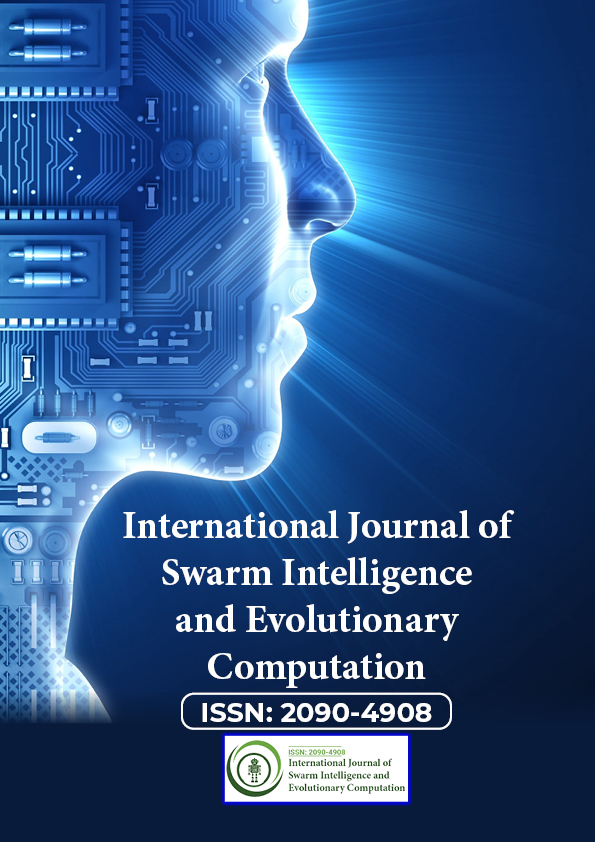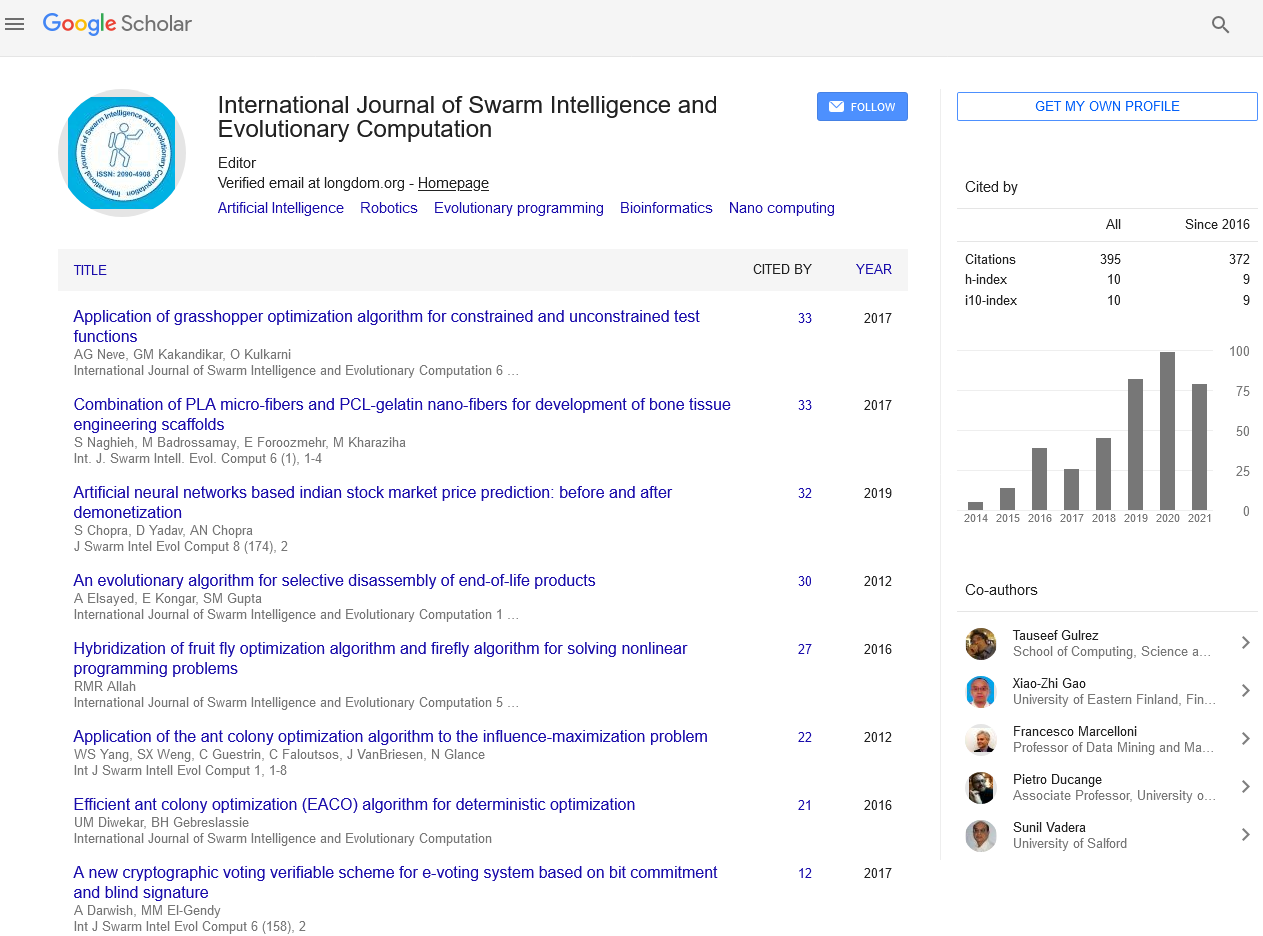Indexed In
- Genamics JournalSeek
- RefSeek
- Hamdard University
- EBSCO A-Z
- OCLC- WorldCat
- Publons
- Euro Pub
- Google Scholar
Useful Links
Share This Page
Journal Flyer

Open Access Journals
- Agri and Aquaculture
- Biochemistry
- Bioinformatics & Systems Biology
- Business & Management
- Chemistry
- Clinical Sciences
- Engineering
- Food & Nutrition
- General Science
- Genetics & Molecular Biology
- Immunology & Microbiology
- Medical Sciences
- Neuroscience & Psychology
- Nursing & Health Care
- Pharmaceutical Sciences
Short Communication - (2020) Volume 9, Issue 4
Who is Accountable if a Self-Contained Robot Causes Damage?
Alain de Broca*Received: 25-May-2020 Published: 12-May-2020, DOI: 10.35248/2090-4908.20.9.187
Summary
Robotics and artificial intelligence are invading our workplaces and especially the world of health. In the European Union, and more particularly in France, legislation is not very well adapted and does not evolve as quickly as technology. The objective of this paper is to submit thoughts about the ethical issue of the responsibility of automatons equipped with artificial intelligence in case of malfunction, or accidents caused by their decisions.
Introduction
The increasing integration of artificial intelligence systems within robotic operating software is an important issue, particularly for the health system. The French and European legal systems still leave a large leeway; open up prospects of major challenges. The plurality of actors present in the manufacturing circulation up to the final buyer raises questions about the imputability of the fault committed by a robot equipped with artificial intelligence. The responsibility of each and every one of them must be clarified [1-8].
The Responsibility of the Robot for Its Decision Making
The recent ability of robots to generate a response to stimuli autonomously overrides human control. The very nature of the robot and its insolvency raise questions about legal liability when a harmful act is performed. How could a human be held responsible for the actions of an entity that decides by itself according to its perception of the environment?
French law offers some clues in its corpus of texts governing civil law, which we have applied to the case of robotics: Within the context we are interested in the so-called liability of principals (senior manager-owner-employer) for the actions of their employees (subordinate-domestic), which also shares common points with parental responsibility. According to article 1242, paragraph 5, of the French Civil Code: "Masters and principals are jointly and severally liable for damage caused by their servants and agents in the functions for which they have employed them".
The requirement of the preposition link through robotics could, in the same way as the employment contract, find its source in the purchase contract.
On the other hand, the ability of the AI to make an autonomous choice is not a difficulty. French case law thus establishes that, despite the professional independence he enjoys in the exercise of his duties, an employed doctor is bound by a state of subordination resulting from a contract of hire of services with a third party. He is therefore an employee.
This form of liability is also rooted in the linkage of the wrongful act to the duties of the employee. Its influence could be remarkable in the development of robotics law: as soon as a robot performs a task under the coordination of a human, or as soon as this task is listed in the basic algorithms, the master, such as a health care institution, would be liable. On the other hand, when a task is performed in total autonomy, a no-fault liability would apply.
Concept of Damage and Insurance
The notion of damage as defined in insurance law is unlikely to change. Robots are assigned to similar tasks performed by human beings.
In a resolution of 16 February 2017, the European Parliament refers to the electronic personality. It recommends the creation of an equity capital for each robot, to be used to compensate possible victims. The contract utilization of a compulsory insurance contract, as in the automobile industry in France since 1985, would avoid the difficulties linked to the constitution of this capital.
Thus, the AI designer would be designated as the principal responsible. He would be designated ex officio because of his role in the development of the robot and its application.
This approach could be undermined by machine learning, and thus the impossibility for the designer to keep control of his machine. The purpose of this parallel is to demonstrate the importance of authority. Indeed, it seems indispensable to incorporate the notion of human authority into the robot's coding.
The European Union authorities are leaning more towards recognizing the responsibility of the owner.
The Medical Data Collection Issue by the Robot and the Manufacturer or a Secondhand Buyer
The accelerated deployment of AI in the health field has quickly made it necessary to protect health data.
The French Government has made the digitization and protection of health data a key focus of its latest health system transformation strategy, called "My Health 2018-2022". However, the question of the circulation of data collected by robots is not addressed.
Although the European Regulation on the Protection of Personal Data (RPPD), which came into force on 25 May 2018 in France, provides a broad definition of health data, it seems difficult to incorporate all types of information into it. Thus, visual data coming from the robot not directly related to health can be diverted.
Moreover, the designers agree on the increasing possibility of the robot to act in an adapted and personalized way by collecting personal information. The control authorities in France, the CNIL, now have the right to impose administrative sanctions themselves when the conditions for dissemination are not met.
This is why the European Parliament recently insisted that designers, industrialists and users should follow an ethical charter.
Example of an Ethical Situation
Here we take the case of patient consent to the robot in a health institution.
How can the patient's choice be respected when an autonomous robot is about to physically interact with him? French legislation provides that the patient's consent must be sought in all cases. In case of refusal, the doctor must respect the patient's will. When he is unable to express himself, a trustworthy person must be consulted.
Thus, no trace of the robot is recorded among these provisions. Our proposal is to adapt the rules in force, so that in the future, medical workers will always be present when consent is sought, before allowing the robot to perform its task in perfect autonomy.
Conclusion
French lawyers are facing a lack of tools to clarify the status and responsibility of the robot with AI. In the absence of a general robotics law, we recommend to first establish safeguards to the technological expansion in the health field. Law could find itself powerless in the face of the influx of litigation for which it has no experience of precedent. Therefore, it is crucial that users remain vigilant, and do not assign robots tasks without human supervision as suggested by the populations questioned in public debates on these subjects.
REFERENCES
- Lhuillier JM. Civil Administrative and Criminal Liability in Social and Medical-Social Institutions And Services. 4th edn. Paris: ENSP; 2006:50-57.
- Ruling by the criminal division of the Court of Cassation (France),1992: 91-81.888.
- Christophe L, Roberto L. The European Robotics Coordination Action, Suggestion for a Green Paper on Legal Issues in Robotics. 2019.
- Dupont M, Bergoignan-Esper C.Medical data in health care institutions, Section 3 Digital techniques and medical data - The E-Santé. 2017:763.
- Mattatia F. Finally, a complete manual on the new legal framework resulting from the RGPD and the Data Protection Act of 2018 Paris: RGPD and Data Privacy Law: 2018.
- European Parliament. A Comprehensive European Industrial Policy on Artificial Intelligence and Robotics; 2019.
- Siranyan V, Chanelière M, Locher F, Dussart C. Gouvernance et éthique cliniques: deux outils complémentaires pour une meilleure coordination des soins et des traitements. Médecine & Droit. 2010; 67-76.
- Debates in Saint Quentin (Region of Hauts-de-France, France) achieved and in Amiens (Region of Hauts-de- France, France). 2018.
Citation: de Broca A, Stevenin M (2020) Who is Accountable if a Self Contained Robot Causes Damage? Int J Swarm Evol Comput 9:187. DOI: 10.35248/2090-4908.20.9.187
Copyright: © 2020 de Broca A, et al. This is an open-access article distributed under the terms of the Creative Commons Attribution License, which permits unrestricted use, distribution, and reproduction in any medium, provided the original author and sour ce are credited.


